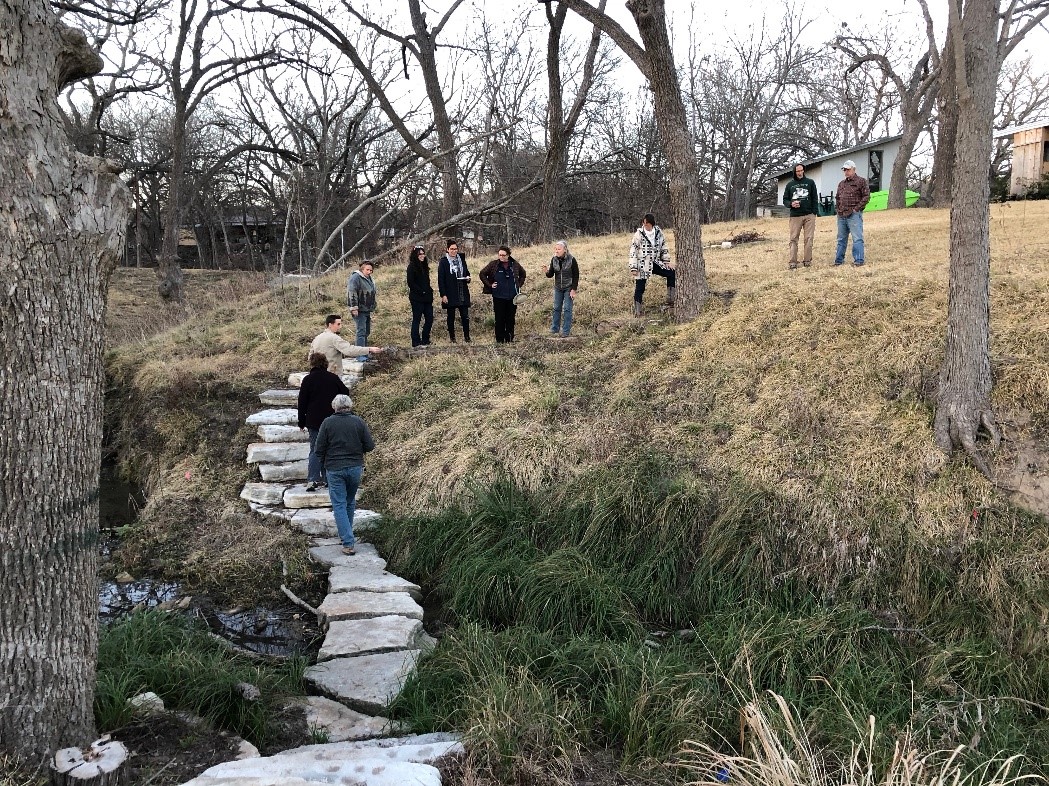Wimberley Landowners Lead Riparian Restoration Efforts
This past January, Suzanne hosted the first of many planned social gatherings designed to facilitate networking by bringing together landowners at sites that provide examples of good riparian stewardship. Photo courtesy of Christine Middleton.
Riparian restoration can be a seemingly deep and complex process. Property owners and the public are most certain to have questions regarding the process of properly restoring riparian ecosystems and even on where to begin. This is why community members, Hays County Master Naturalists Suzanne Davis, and Christine Middleton decided to create a landowner network. The purpose of the "Riparian Restoration Network" is to encourage and provide support to local landowners who have already committed to restoring their properties. Suzanne and Christine focus not just on the Blanco River, but also its tributaries, including Cypress Creek, Lone Man Creek, Wilson Creek and smaller ephemeral waterways.
A riparian ecosystem is an area where the land transitions from soil to water and consists of certain types of vegetation. These areas are essential to slowing and storing floodwater, maintaining water quality, providing species habitat, stabilizing banks to reduce erosion during floods, recharging groundwater and other functions. Your Remarkable Riparian Field Guide and Owner’s Manual is a deeply informative tool that presents enriched instructional content to build a better riparian understanding including plant species, photos, and descriptions for most of Texas.
The need for riparian restoration is considerable - even more so in an area such as the Hill Country, where residents are all too familiar with the consequences of extreme flooding and drought. Riparian areas are crucial for diminishing the impacts of droughts, as they sustain water infiltration and thus keeps our waterways flowing. While it usually takes many years to see the impact of droughts on riparian areas, flood impacts can be seen immediately and can sometimes cause prolonged effects - so much so that some of these areas have not yet fully recovered from the 2015 Memorial Day Weekend Flood.
Riparian ecosystems are important for watersheds due to the many ecosystem services they provide such as storing floodwater and dissipating energy. Because many landowners enjoy having a well-manicured lawn and “clean” looking property, they often alter the riparian areas in ways that disturb the balance of the surrounding ecosystem. Furthermore, the population in Hays County is rapidly increasing which will create a bigger strain on our state’s natural resources. Suzanne and Christine are determined to prove to the community that riparian restoration can be both simple and aesthetically pleasing in ways that balance the desires of landowners with the needs of our waterways. Please feel free to email riparian@haysmn.org if you are interested in obtaining assistance in restoring your property to its full riparian potential.
The Cypress Creek Watershed Protection Plan includes efforts to reduce negative impacts on the watershed with stormwater management with Best Management Practices (BMPs) and green infrastructure. For more information and resources on riparian restoration and the important role that riparian buffers play in an ecosystem please visit http://www.cypresscreekwatershed.org/.
To learn more about what Suzanne and Christine’s efforts, please visit -https://trello.com/invite/b/rqCJWWoN/db51cc685e6ef6ee9656a55fa656e0f6/riparian-restoration-blanco-river

